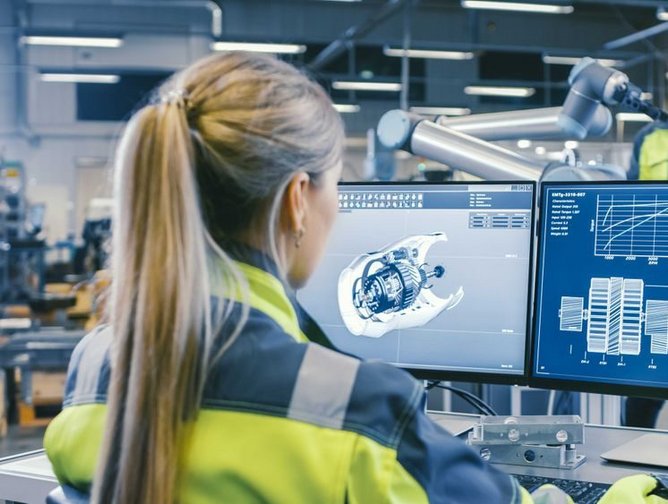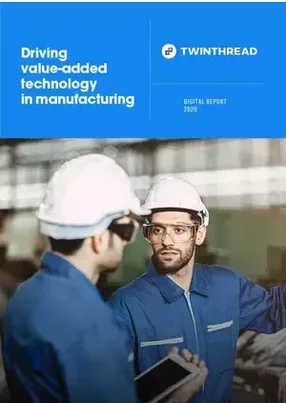TwinThread: driving value-added technology in manufacturing
Working in the industrial automation and manufacturing space for 25 years, Erik Udstuen began his career as a chemical and process engineer working in the pulp and paper industry, before forming his own company in the early nineties providing customers with manufacturing optimization solutions for multiple sectors. After selling the company to General Electric (GE) in 2003, Udstuen joined the firm in 2007 as a Senior Executive driving digital transformation across multiple business units.
“I left GE in 2012 and went back into the startup world and formed a couple of other companies, the latest company is TwinThread,” comments Udstuen, who believes that a significant differentiator between TwinThread and other organisations is its results guaranteed position.
“The idea of TwinThread is to provide similar capabilities and concepts that monitor and optimize a fleet of power plants or gas turbines to other industries like manufacturing, consumer products, food, and beverage, and automotive. The enabler for this is the fact that we have these pre-built applications that someone can just take, apply and gain valuable insights without having to go through a long deployment.
“We embrace the opportunity to deploy pilot projects that deliver proof of value for outcomes and that as well is very unique. In doing so, we want to roadmap and fund future opportunities for our customers.”
With this in mind, when it comes to digital innovation, TwinThread’s vision is “to be able to optimize on a global basis and drive 1 or 2% more efficiency out of manufacturing operations or a network of assets,” adds Udstuen. In order to achieve this he further explains that “the enabler is algorithms and the power of technology such as machine learning to make that practical. We have a customer, for example, that is monitoring 450 data centers across the world and they're doing that with just a few people. The only way that becomes practical and economically feasible is if you apply algorithms and machine learning technologies. With these capabilities, organizations can drive innovative opportunities to drive efficiency.”
When it comes to deploying a digital strategy, Udstuen highlights the importance of having the right culture and mindset. “It's critical. It may be a bit of a cliche, but really the executive buy-in sponsorship commitment to any kind of digital transformation effort is essential. But maybe what potentially is less obvious is that in terms of the culture and mindset in this new digital age, and with the incorporation of machine learning and artificial intelligence technologies, leaders have to think in terms of their change management strategy - how do you bring together the roles of the IT teams, the data scientists and the engineer to understand the data and solve business problems using digital technology.”
Within the industry, Udstuen explains that when it comes to the importance of technology, ‘we're obviously very biased given that we're a technology company, focused on applying machine learning and artificial intelligence technologies. However, in a recent Harvard business review article, it was suggested that 84% of leaders believe they should be implementing artificial intelligence and machine learning based technologies. But, only 16% actually have a program that's deploying that technology. So there's a huge gap between the desire and the people that are actually implementing.
The trends in terms of the application of that technology are clear, but the trends of how to actually get moving and start deploying that technology, those trends are only just emerging.” Udstuen also highlights that within that article, it was referenced that successful companies that are applying this technology are doing two key things. “One is the use of cross functional teams, and the other is making the commitment and adopting technology in production as a first step.”
Other trends within the industry seen by Udstuen include the concepts of connected factories, connected fleets and predictive maintenance. “Starting with manufacturing there are multiple innovations and layers to the technology, some are new and some have been around for a while. In the mid nineties, organizations began investing in sensor technology, the technology to record the data from the sensors and the technology to store the data for long periods of time. In the mid two thousands this expanded into most industries which means that there are billions of sensors that have been deployed and are collecting data.
Today, the concept of connected factories and fleets is to mine new insights from not only the information that's already been collected, but also new data being created. With the advancement of innovative technology such as machine learning, cloud computing, artificial intelligence (AI) and 5G, the concept of connected environments are becoming more and more feasible and in real-time.”
Another part of TwinThead’s vision is that “a modern operating strategy should be one where a company can optimize their entire enterprise of assets efficiently. It's no longer about optimizing a single plant or a single line. It's about how to optimize the performance of all of your assets and do that efficiently. This is where predictive maintenance comes in. It's one thing to be able to look backwards and say, these were the problems that I had and this is how I applied these resources enabling me to solve the problem. It's another to be able to look forward and to anticipate where the problems might be, and to be able to act before those problems manifest themselves. There's a lot of value in looking backwards and understanding what went wrong and what went right, but it is a whole new level of value to be able to look forward and anticipate problems and to have strategies in place, to deal with problems in real-time in a proactive and predictive way,” comments Udstuen
Reflecting on the future, Udstuen believes that from a TwinThread perspective what the company is trying to continuously achieve, “is that with any adoption of technology, an organization requires a tool set to do their own development work, in order to turn the technology into an actual application that delivers value. So what we're trying to drive is the ability to take those building blocks, and actually create applications out of them so that customers can just deploy the application that solves the problem without having to conduct the development work based on a tool set. This helps to eliminate the development time so that customers can get straight to deploying and straight to getting value.”




